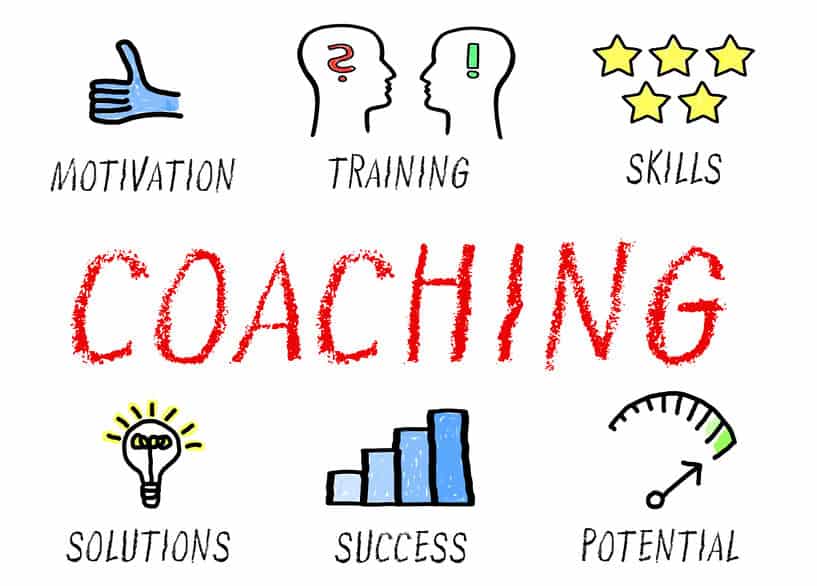 Managers who effectively harness their coaching skills reap multiple benefits. Their employees are more committed, willing to put in greater effort and are less likely to leave.
Managers who effectively harness their coaching skills reap multiple benefits. Their employees are more committed, willing to put in greater effort and are less likely to leave.
Most managers have had some training in coaching people for high performance. Ten years ago, 73% of managers received some form of training, according to BlessingWhite, a global leadership-development firm. But the firm’s 2015 report reveals that employees who receive regular feedback through coaching conversations are in the minority.
Why Don’t More Managers Coach?
Managers usually cite lack of time as the main excuse for failing to coach employees, but the real reasons may be different, note John H. Zenger and Kathleen Stinnett in The Extraordinary Coach: How the Best Leaders Help Others Grow (McGraw-Hill Education, 2010).
Three common barriers stand in the way:
- Misconceptions of what coaching is
- A desire to avoid difficult conversations
- No clear game plan for initiating and framing coaching conversations
The Manager-Fixer
Despite good intentions, the manager-fixer creates numerous problems:
- Quick fixes don’t teach people to think for themselves.
- When work is challenging, employees will look to their managers for an easy fix.
- Managers who fix problems encourage dependency, thereby creating additional work for themselves.
Let’s address the reasons why managers fail to coach.
- Misconceptions of What Coaching Is
Coaching isn’t instructing, mentoring, counseling, cheerleading, therapy or directing, although there are some similarities. Coaching skills include:
- Clarifying an interaction’s outcome and agreeing to a conversation’s goal
- Listening to what is—and isn’t—said
- Asking non-leading questions to expand awareness
- Exploring possibilities, consequences, actions and decisions
- Eliciting a desired future state
- Establishing goals and expectations, including stretch goals
- Providing support
- Following up on progress
- Setting accountability agreements
- A Desire to Avoid Difficult Conversations
Coaching conversations require time and energy, but they’re the only way to gain trust, honesty and transparency. If you’re unwilling to invest the required time and effort, coaching will inevitably fail.
- No Game Plan for Coaching Conversations
Many coaching models exist, but the best are short, simple and easy to employ. With a solid framework, you can achieve results in as little as 10 minutes.
GROW Model
One of the original coaching frameworks is the GROW model, created by Graham Alexander, Alan Fine and Sir John Whitmore:
| G | Goal | The Goal is where the client wants to be. It must be clearly defined so people know when they’ve achieved it. |
| R | Reality | The Current Reality is where the client is now. What are the issues and challenges? How far away is Goal achievement? |
| O | Obstacles | What Obstacles are stopping the client from reaching the Goal? |
| Options | Once Obstacles are identified, the client finds Options to deal with them and make progress. | |
| W | Way Forward | The Options are converted into the Way Forward—action steps that map the way to reach the Goal. |
FUEL Coaching Conversations
Zenger and Stinnett suggest using the FUEL model in The Extraordinary Coach:
- F = Frame the Conversation. Set the context by agreeing on the discussion’s purpose, process and desired outcomes.
- U = Understand the Current State. Explore the current state from the coachee’s point of view. Expand the coachee’s awareness of the situation to determine the real coaching issue.
- E = Explore the Desired State. Articulate your vision of success in this scenario. Explore multiple alternative paths before prioritizing methods of achieving this vision.
- L = Lay Out a Success Plan. Identify the specific, time-bounded action steps to be taken to achieve the desired results. Determine milestones for follow-up and accountability.
Face the Coaching FACTS
While people enjoy receiving their managers’ support, they also want to be challenged, note John Blakey and Ian Day in Challenging Coaching: Going Beyond Traditional Coaching to Face the FACTS (Nicholas Brealey Publishing, 2012).
Blakey and Day developed the FACTS coaching model from frontline observations:
- F = Feedback: How can coaches provide challenging feedback that informs and inspires? How can we ensure that praise and recognition are balanced with honest feedback on mistakes?
- A = Accountability: How does a coach hold people accountable for commitments without blame or shame? How can accountability be extended from personal commitments to alignment with the values, strategy and ethos of the wider organization?
- C = Courageous Goals: How does a coach move beyond incremental goal-setting models to those that engage the right-brain attributes of courage, excitement, inspiration and transformation?
- T = Tension: When is tension constructive? How can coaches practice creating and holding tension without risking burnout in key performers? How can the tension in a conversation be calibrated and dynamically adjusted to ensure peak performance? When does tension go too far and damage the underlying relationships?
- S = Systems Thinking: How can a coach stay sensitive to “big-picture” issues like ethics, diversity and the environment without losing focus on bottom-line results? What can be learned from the world of systems thinking that enables the coach to be a positive agent of change for the wider organization?
Powerful Questions
Managers who avoid coaching often struggle with starting a coaching conversation. In the absence of deep, hour-long coaching sessions, you can use key questions to realize change and growth.
Michael Bungay Stanier shares seven core questions to open coaching conversations in The Coaching Habit: Say Less, Ask More & Change the Way You Lead Forever (Box of Crayons Press, 2016):
- What’s on your mind?
- What else?
- What’s the real challenge here for you?
- What do you want?
- How can I help?
- If you’re saying “yes” to this, to what are you saying “no”?
- What was most useful for you?


